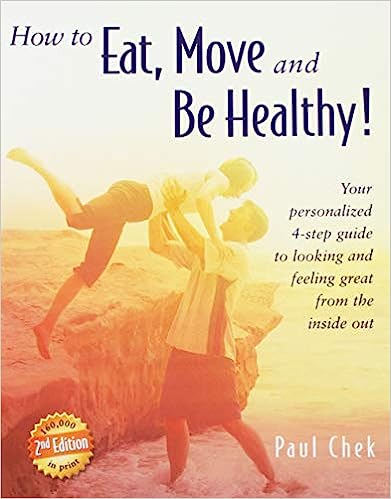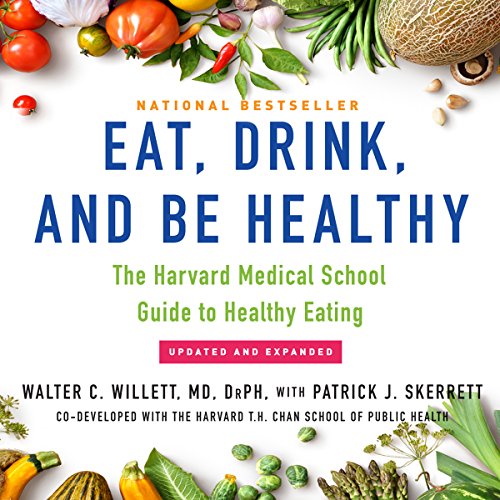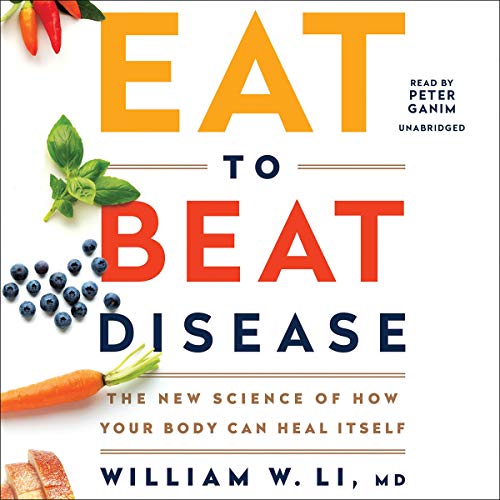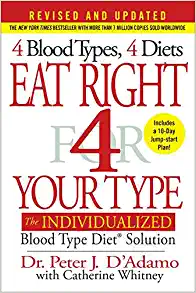It can be difficult to maintain a healthy lifestyle in today’s fast-paced society. A healthy, balanced diet is one of the primary cornerstones of total wellbeing. However, navigating the realm of healthy food can be challenging due to the abundance of contradictory information. In this post, we’ll examine how to eat healthy and provide you usable advice on how to choose foods wisely. So let’s begin the journey to a healthy you!
Knowing the Foundations of a Healthy Diet
It’s not necessary to follow a rigorous diet or deprive yourself of your favorite meals in order to eat healthily. It involves feeding your body the proper nutrition to enable optimal performance. A nutritious diet should include a variety of foods that are high in vitamins, minerals, and macronutrients. You can make sure that your body gets the nutrition it needs to thrive by adopting a balanced assortment of foods.

How to Eat, Move and Be Healthy!
Foods Rich in Nutrients for a Balanced Diet
It’s critical to include a range of food groups in your diet to attain a well-rounded diet. Concentrate on consuming a variety of healthy foods, such as plenty of fruits, vegetables, whole grains, lean proteins, and healthy fats. These foods are brimming with vital nutrients that support wellness and help ward off chronic illnesses.
Moderation and Portion Control
While food quality is important, moderation and quantity control are crucial for preserving a healthy weight and avoiding overeating. Pay attention to your body’s signals of hunger and fullness and adopt mindful eating techniques. This entails chewing food thoroughly, eating slowly, and paying attention to your hunger and fullness cues. You can prevent overeating and maintain a healthy balance by paying attention to your body.
Hydration’s Function
In addition to nutrition, adequate hydration is essential for good health. Numerous biological processes, such as digestion, food absorption, and waste removal, depend on water. Limit your intake of sugary beverages and try to get enough water throughout the day. Your hunger can be controlled, your energy levels can be increased, and your general wellbeing can be supported by being hydrated.

How to Eat Better: How to Shop, Store & Cook to Make Any Food a Superfood
Understanding Your Nutritional Requirements
Each person has specific nutritional requirements depending on their age, sex, amount of exercise, and underlying health issues. To develop a customized eating plan, it is critical to evaluate your nutritional needs. When deciding on the proper calorie intake and nutrient distribution for your unique needs, consulting with a qualified dietitian can offer insightful advice.
Calculating Caloric Intake
Caloric intake is the term used to describe how many calories you ingest each day. It’s crucial to comprehend your calorie requirements if you want to maintain your weight and strike a healthy equilibrium. Your calorie needs depend on a number of variables, including basal metabolic rate (BMR), degree of physical activity, and goals (such weight loss, maintenance, or increase). You can get help choosing a suitable calorie range for your objectives by using online calculators or getting professional advice.
Making the Best Macronutrient Choices
Carbohydrates, proteins, and fats are the three macronutrients that make up the bulk of your body’s energy needs. Every macronutrient is essential for preserving overall health. It’s crucial to balance these macronutrients in your diet. Choose whole grains for your complex carbs, lean proteins from poultry, fish, and lentils, and healthy fats from foods like avocados, almonds, and olive oil.

Eat, Drink, and Be Healthy: The Harvard Medical School Guide to Healthy Eating
Utilizing Micronutrients
Micronutrients including vitamins and minerals are essential for a number of biological processes. They aid in metabolism, encourage healthy skin, enhance immune function, and add to general wellbeing. To make sure you’re getting a variety of micronutrients, include a wide variety of fruits, vegetables, nuts, seeds, and whole grains in your diet. If necessary, under a doctor’s supervision, think about taking vitamins or minerals as supplements.
Planning and preparing meals
Maintaining a balanced diet requires careful meal planning and preparation. You can make sure you eat a balanced and nutritious diet throughout the week by organizing your meals in advance. Make a grocery list based on the meals you’ve planned to eat first, and whenever feasible, choose whole foods over processed ones. Set aside time for meal planning, which enables you to prepare components or even entire meals in advance, making healthy options accessible and practical.
Food label reading
Making informed eating decisions requires being able to read food labels. Serving sizes, calorie counts, macronutrient breakdowns, and ingredient listings are all readily available on food labels. Pay attention to the nutritional facts and ingredients, and choose meals with few artificial additions or preservatives.
Keeping Sugary and Processed Foods to a Minimum
When taken in excess, processed and sugary foods can be harmful to your health. These foods frequently lack vital nutrients and are heavy in harmful fats, salt, and added sugars. Limit your consumption of fast food, desserts, sugary drinks, and processed snacks. Instead, choose entire, unprocessed meals that are sources of nutrients naturally.

Eat to Beat Disease: The New Science of How Your Body Can Heal Itself
Fruits and vegetables are included
Nutrient powerhouses, fruits and vegetables are abundant in vitamins, minerals, and antioxidants. Try to include several fruits and vegetables with various textures and flavors in your meals to add a range of hues. The vital nutrients included in these plant-based diets support general wellness. To ensure a balanced and nutrient-rich lunch, aim to fill half of your plate with colorful fruits and vegetables.
Selecting whole grains
A great source of fiber, vitamins, minerals, and antioxidants is whole grains. They enhance intestinal health and offer enduring energy. Select whole grain products over refined grains, such as brown rice, quinoa, whole wheat bread, and oats. Whole grains enhance the nutritious value of your meals and encourage sustained feeling of fullness.
Lean proteins should come first
Building and mending tissues, boosting immune system performance, and preserving muscle mass all depend on protein. Pick low-fat dairy products, skinless poultry, fish, lentils, tofu, and other lean protein sources. These choices offer premium protein without having too many saturated fats. Your daily protein requirements can be satisfied while improving your general health by incorporating a range of lean proteins into your meals.

Eat Right 4 Your Type (Revised and Updated): The Individualized Blood Type Diet® Solution
How to Get Rid of Cravings and Emotional Eating
Your attempts to eat healthfully might frequently be derailed by cravings and emotional eating. It’s crucial to comprehend the causes of these behaviors and create management plans for them. When cravings arise, attempt to divert your attention with a healthy substitute, a fun hobby, or mindful eating. Finding different coping strategies, such as exercise, writing, or asking for support from friends and family, can help stop emotional eating.
Conscious Eating Techniques
Being totally present and aware as you eat is considered mindful eating. Take your time, enjoy every bite, and pay heed to your body’s signals of hunger and fullness. Stay away from distractions like screens and on-the-go snacking. You may increase your pleasure of food, improve digestion, and make deliberate decisions that support your health goals by engaging in mindful eating.
Having a Balanced Outing
Your healthy eating habits don’t have to suffer when you eat out. When eating out, be aware of portion sizes and pick places that serve healthier food. Instead of fried foods, seek out those that are grilled, baked, or steamed. Choose water or unsweetened beverages, ask for dressings and sauces on the side, and demand vegetable-based sides. You can still eat meals away from home while following a healthy diet if you choose carefully.
Including Physical Exercise
An active lifestyle requires regular physical activity. Regular exercise helps with weight management and improves wellbeing in general. Try to complete at least 150 minutes of moderate-intensity activity per week, whether it be walking, dancing, cycling, or swimming. Regular exercise and a healthy diet work together to provide a holistic and long-lasting approach to wellness.

HEART HEALTHY COOKBOOK FOR BEGINNERS: 1500 Days Simple Low Sodium & Low-Fat Recipes to Lower Your Blood Pressure, Cholesterol Levels and Live Longer.
Particulars Regarding Various Diets
To achieve a healthy diet, specific dietary preferences or limits can need extra consideration. Planning meals that include enough protein, iron, calcium, and vitamin B12 from plant-based sources is crucial for vegetarians and vegans. Focusing on naturally gluten-free foods such fruits, vegetables, lean proteins, and gluten-free grains like rice or quinoa is recommended for people who follow gluten-free diets. For those who are lactose intolerant or allergic to dairy, dairy-free alternatives can be used to provide appropriate calcium intake through fortified plant-based milks or other calcium-rich meals.
Take Care of Food Allergies
It is very important to carefully read product labels and be aware of potential allergens if you have food allergies. Finding adequate substitutes for trigger foods and avoiding them are essential to preventing allergic responses. To develop a healthy eating plan that fits your individual needs, speak with a nutritionist or healthcare expert.
The Advantages of Healthy Eating
Healthy eating has many advantages outside merely improving physical health. You can benefit from a variety of advantages by providing your body with nourishing foods, including:
Enhanced Physical Health
A balanced diet promotes complete physical wellness. It gives the body the nutrition it needs for healthy organs, a strong immune system, and an effective metabolism. You can experience more energy, better digestion, and more restful sleep by providing your body with nutrient-rich foods.
Weight Control
Many people have the common objective of maintaining a healthy weight. You can efficiently manage your weight by establishing a balanced and nourishing eating schedule. Your ability to feel full while consuming fewer calories can be improved by eating a diet high in fruits, vegetables, lean proteins, and whole grains. You’ll be on the right track to obtaining and maintaining a healthy weight if you pair this with frequent exercise.
An increase in energy
Your body gets its energy from the food you eat. The nutrients required to maintain energy levels throughout the day are provided by a healthy diet. You may prevent energy crashes and experience continuous vigor by eliminating sugary snacks and choosing nutritious foods instead. A consistent source of energy can be obtained by include balanced meals and snacks that contain complex carbs, proteins, and healthy fats.
Lower Risk of Chronic Illnesses
A healthy diet can greatly lower the chance of developing chronic conditions like heart disease, type 2 diabetes, and several types of cancer. You may support heart health, control blood sugar levels, and improve overall wellbeing by eating nutrient-dense meals and avoiding processed and sugary foods. In controlling illnesses like high blood pressure and cholesterol levels, a healthy diet is also quite important.

Eat to Beat Your Diet: Burn Fat, Heal Your Metabolism, and Live Longer
Conclusion
Making decisions that benefit your general wellbeing rather than following rigid rules or going without food is what it means to eat healthfully. You can start your road toward a healthier living by comprehending the foundations of a good diet, determining your nutritional needs, and putting strategies for selecting smart food choices into practice. Always prioritize nutrient-dense foods, exercise moderation and portion control, and pay attention to your body’s signals. You may enjoy the many advantages of a healthy, balanced diet if you are dedicated and consistent.
FAQs
Can I eat a balanced diet on a tight budget?
Absolutely! It’s not necessary to spend a fortune on a healthy diet. Planning your meals, purchasing seasonal vegetables, and choosing affordable protein sources like eggs and lentils will all help you save money. Additionally, relying on nutritious foods and cooking meals at home is frequently less expensive than relying on convenience or processed foods.
How can I fend off urges for bad food?
Although managing cravings can be difficult, there are methods for doing so. Attempt to divert your attention with a nutritious substitute, like a piece of fruit or a handful of almonds. Take part in mind-occupying activities, such as calling a buddy or going for a stroll. Determine the underlying causes of your cravings, such as stress or boredom, and look for alternatives to deal with those problems.
Do supplements for a healthy diet need to be taken?
In general, a balanced diet should give you the nutrients you need. However, certain people might have particular vitamin shortages or special dietary requirements. In these situations, supplements could be suggested with the advice of a medical expert or trained dietician. Always get expert advice from someone who can evaluate your unique needs.
Is it possible to eat healthily and still enjoy your favorite foods?
Absolutely! Your favorite foods do not have to be entirely cut out of your diet to be healthy. Balance and moderation are key. While concentrating on a general wholesome eating plan, you can still occasionally indulge in treats or other vices. You can enjoy your favorite meals without jeopardizing your health goals by controlling your portions and practicing mindful eating.
Are there any negative effects of eating well?
Although there are many advantages to eating well, it’s crucial to take a sustainable and balanced approach. Some people could find it difficult to handle social circumstances or feel constrained by their eating preferences. Additionally, excessively rigid or obsessive eating habits might lead to an unhealthy connection with food. It’s important to keep a good outlook, pay attention to your body’s demands, and get help if you have any worries about your eating habits. Keep in mind that the objective is to place a priority on nutrition and wellbeing while continuing to enjoy a range of foods in moderation.

